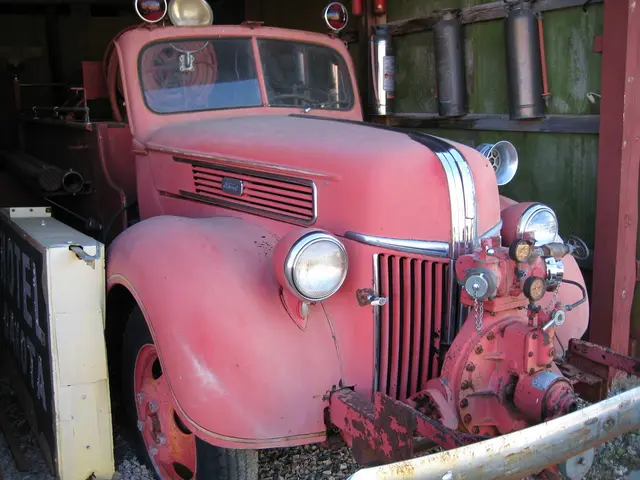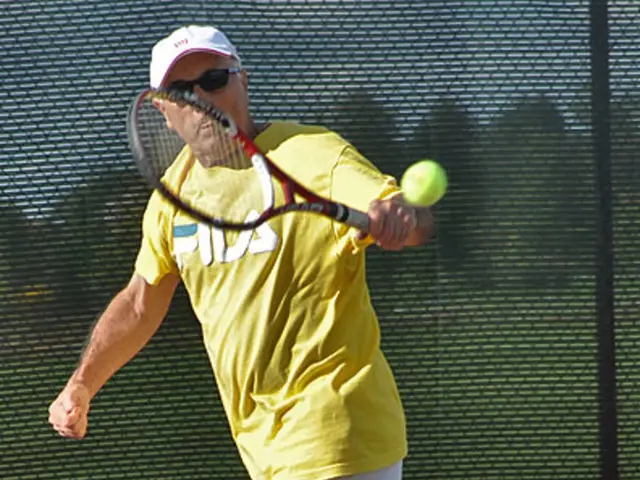Comprehensive Water Purification Strategies: Your Essential Guide to Safe Drinking Water
Necessary Survival Gear: A Comprehensive Guide for All
Having access to clean drinking water is vital for survival, particularly in emergencies scenarios where the risk of contamination is high. Consuming impure water can lead to serious health issues, including gastrointestinal infections and other diseases. By familiarizing yourself with various water purification methods, you can ensure access to safe drinking water in diverse environments, whether you find yourself in the wilderness, lost during a hike, or in areas lacking proper infrastructure. Understanding these methods not only empowers you but also enhances your confidence in handling unexpected situations effectively.
Harnessing Boiling Water for Effective Purification
Boiling water is widely recognized as one of the most reliable and effective methods for purifying water. By heating the water until it reaches a rolling boil for at least one minute (or three minutes if you are at high altitude), you can eliminate harmful pathogens, including bacteria, viruses, and parasites. This purification method is universally applicable and requires only a heat source and a container, making it accessible to anyone. Whether you use a campfire, a portable stove, or even a solar cooker, boiling water is a straightforward yet powerful tool in your survival toolkit.
In survival situations, the ability to boil water can truly make a significant difference. For example, when hiking through remote areas, natural water sources like lakes or streams might appear crystal clear but can still harbour hidden pathogens. Boiling the water guarantees its safety for consumption, and this can be accomplished even under the most basic conditions. Therefore, it is crucial to have a dependable means of igniting a fire or a compact burner to utilise this essential method of water purification effectively.
Moreover, even during urban emergencies where the water supply might be compromised due to contamination, boiling can provide invaluable peace of mind. However, it's essential to remember that boiling water does not remove chemical pollutants or heavy metals, which can also be harmful. Therefore, it is advisable to combine boiling with other purification techniques to achieve comprehensive water treatment for complete safety.
Efficient Chemical Purification Techniques
Chemical purification methods involve utilising substances such as iodine or chlorine tablets to disinfect water quickly. These chemicals are highly effective at eliminating harmful microorganisms, making them a practical choice for those venturing into regions without reliable water sources. Iodine tablets, in particular, are especially useful due to their compact size and extended shelf life, making them a convenient addition to your survival kit.
To purify water using chemicals, dissolve the recommended number of tablets in a specific volume of water and allow it to sit for the prescribed duration before consumption. This method proves advantageous during emergencies, where you may not have the luxury of time to wait for boiling. However, precise measurement and adherence to guidelines are essential for the effectiveness of this method.
While both iodine and chlorine are adequate, they may impart an unpleasant taste to the water. To improve the drinking experience, consider adding a splash of fruit juice or using flavour packets. Additionally, individuals with thyroid issues or pregnant women should consult healthcare professionals before using iodine. For long-term survival scenarios, it's prudent to familiarise yourself with all available chemical purification options and understand their implications for health and safety.
Portable Filtration Systems: Your Essential Survival Companion
Portable water filters are valuable, essential survival tools that allow you to obtain clean water from natural sources. They come in various designs, ranging from simple straw filters to advanced pump systems capable of removing bacteria, protozoa, and even some viruses. The importance of having a reliable filtration system cannot be overstated, particularly for those planning to spend extended periods in the wilderness or remote locations where clean water is scarce.
When selecting a filtration system, consider factors such as portability, flow rate, and the specific types of contaminants it can remove. Some advanced filters are designed to eliminate viruses, while others may only target bacteria and protozoa. It's crucial to read product specifications carefully and choose a filter that meets your specific needs. For instance, lightweight filters are ideal for backpackers, while larger systems might be more suitable for groups or families.
Using a filtration system is typically straightforward, but it does require regular maintenance. To ensure optimal performance, clean the filter according to the manufacturer's instructions. Furthermore, it's essential to note that filters can become clogged over time. Therefore, having a backup purification method, such as boiling or chemical treatment, is advisable, especially in emergencies where access to clean water is critical.
Ultraviolet (UV) Purification: A High-Tech Solution
Ultraviolet (UV) purification is an innovative method that utilizes UV light to eradicate pathogens in water effectively. This technology has gained popularity for its effectiveness and ease of use. By exposing water to UV light for a short duration, you can successfully eliminate bacteria and viruses without relying on chemical agents, making it an attractive option for many outdoor enthusiasts.
Portable UV purifiers are compact and battery-operated, rendering them ideal for travellers and adventurers on the go. To utilise this method, fill a clean container with water, insert the UV device, and activate it. Within just a few minutes, you'll have purified water ready for consumption. This method is particularly valuable in areas where boiling is impractical or where chemical treatments are not desired.
However, UV purification does have certain limitations. It is ineffective in turbid or cloudy water since impurities can shield microorganisms from UV light, making pre-filtering necessary in such cases. Additionally, as UV devices require power, ensuring you have spare batteries or a solar charger can enhance reliability during extended outings in remote areas.
Solar Disinfection (SODIS): Harnessing Nature's Power
Solar Disinfection (SODIS) is a clever method that utilises sunlight to purify water. By filling clear plastic bottles with water and exposing them to direct sunlight for a minimum of six hours, harmful microorganisms can be effectively neutralised. This method is straightforward and highly accessible, particularly in sunny regions where natural sunlight is abundant.
SODIS is an excellent option for crises or remote areas where other purification methods may not be available. It requires minimal resources-just clear bottles and sunlight-making it a practical choice for many. While this method is primarily effective against bacteria and viruses, it may not eliminate chemical contaminants. Therefore, consider combining SODIS with another purification method if you suspect chemical pollution in your water source.
The beauty of SODIS lies in its cost-effectiveness and sustainability. It requires no special equipment beyond commonly available clear plastic bottles, making it an invaluable tool for communities struggling with access to clean water. By embracing SODIS, you contribute to environmental awareness and responsible water management practices, fostering a sense of community and self-sufficiency.
Compiled by IA
Selective Use of Enrichment Data:
- Incorporate enrichment data only when it clarifies, supports, or enriches the article. Avoid overloading the content with excessive details.
Paragraph Adjustments:
- Break long paragraphs into smaller, reader-friendly sections. Combine short, fragmented sections where it improves readability.
Revise and Vary Sentences:
- Restructure sentences by reordering clauses, replacing phrases with synonyms, or combining ideas in new ways to ensure originality while preserving meaning.
Flow and Coherence:
- Ensure the revised text flows seamlessly, maintains clarity, and feels cohesive throughout.
Context Limits:
- If the content exceeds the input limit, prioritize preserving the base article and integrating only the most relevant enrichment insights.
Clean drinking water is essential for survival, especially in emergencies where contamination risks are high. Consuming impure water can lead to gastrointestinal infections and other diseases. Familiarizing oneself with various water purification methods ensures access to safe drinking water in diverse environments, such as the wilderness, lost during hikes, or in areas lacking proper infrastructure. This knowledge empowers individuals and enhances their ability to handle unexpected situations effectively.
Boiling water is a universally recognized and effective method for purifying water by heating it until it reaches a rolling boil for at least one minute (or three minutes if at high altitude). This process eliminates harmful pathogens, including bacteria, viruses, and parasites. The ability to boil water, whether using a campfire, portable stove, or solar cooker, is a vital tool in one's survival toolkit, especially when hiking through remote areas or dealing with compromised water supplies in urban emergencies.
Chemical purification methods use substances like iodine or chlorine tablets to disinfect water quickly, effectively eliminating harmful microorganisms. While chemical purification is practical for those venturing into regions without reliable water sources, it may impart an unpleasant taste to the water and might not remove chemical pollutants or heavy metals.
Portable water filters are vital, essential survival tools that get rid of contaminants from natural sources. They come in various designs, from simple straw filters to advanced pump systems, capable of removing bacteria, protozoa, and some viruses. Regular maintenance is required to ensure optimal performance, and having a backup purification method is advisable, especially in emergencies.
UV purification uses UV light to eradicate pathogens in water effectively. Portable UV purifiers are compact and battery-operated, making them ideal for travellers and adventurers on the go. This method eliminates bacteria and viruses without relying on chemical agents but is ineffective in turbid or cloudy water and requires power.
Solar Disinfection (SODIS) uses sunlight to purify water by exposing it to direct sunlight for a minimum of six hours. This method is straightforward, accessible, effective against bacteria and viruses, and requires no special equipment beyond common clear plastic bottles. However, it may not eliminate chemical contaminants and requires clear, sunny conditions to be effective.
Harnessing nature's power to purify water contributes to environmental awareness and responsible water management practices, fostering a sense of community and self-sufficiency. Education and self-development play a crucial role in mastering these lifesaving skills, especially in the context of outdoor sports and health-and-wellness lifestyle choices.
By learning about these water purification strategies, one takes an important step towards ensuring health, safety, and resilience in a variety of situations. Whether you're camping, participating in sports, or merely preparing for emergencies, these tools and techniques can make the difference between a safe, enjoyable experience and one fraught with peril.








